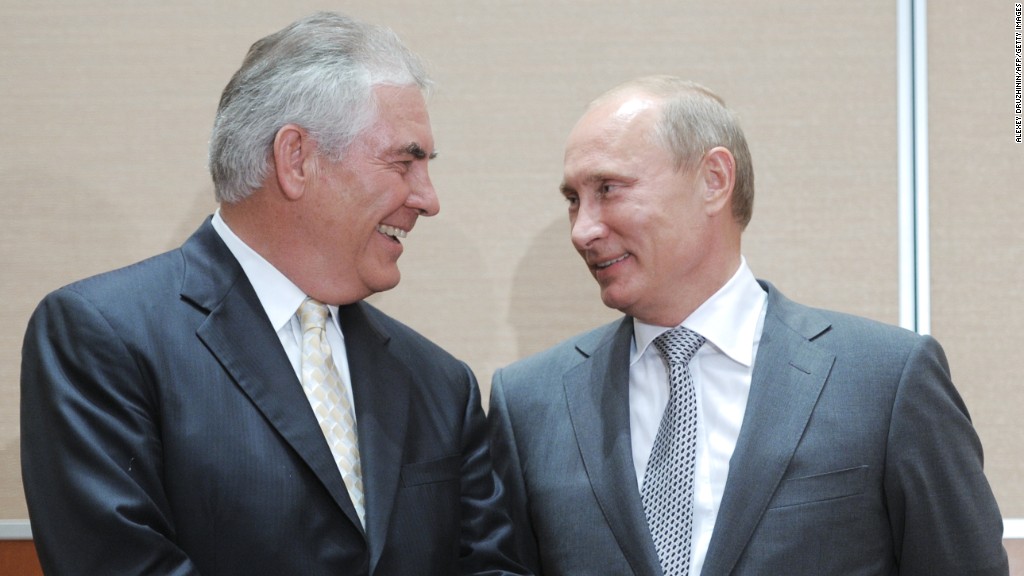
ExxonMobil, the king of the American oil industry, is in a deep slump.
Profit has come crashing back to earth. Exxon's pumping less oil —- even as more nimble rivals capitalize on the shale revolution. And Exxon's (XOM) share price remains in the doldrums despite soaring oil prices.
"It's been a lost decade for them," said Brian Youngberg, senior energy analyst at Edward Jones.
Exxon's struggles reflect poorly placed bets that sapped resources and left the largest US oil company watching the oil boom from the sidelines. While the United States is pumping more oil than ever before, Exxon's production has dropped seven of the past eight quarters.
CEO Darren Woods is attempting to jump-start growth by plowing billions of dollars into far-flung projects in South America, Africa and Papua New Guinea. And Exxon is playing catch-up in the shale game by spending heavily on the surging Permian Basin of West Texas.
Wall Street is hoping for glimmers of hope from these projects when Exxon reports results on Friday.
Related: Big Oil goes from begging for cash to rewarding shareholders
Investors are growing impatient, especially as Exxon's rivals reward shareholders with juicy share buybacks. Royal Dutch Shell (RDSA) unveiled a $25 billion buyback program on Thursday. ConocoPhillips recently ramped up its own buyback plan by $9 billion.
Exxon, to its credit, has so far not given into pressure to return cash. It's focusing instead on investing in the future.
"The problem is the market has gotten more short-term oriented," Youngberg said. "It's hard to tell investors to be patient and wait — especially when your recent track record has not been good at delivering."
Exxon misfired on several major deals. The most noteworthy was the 2010 purchase of natural gas producer XTO Energy for $41 billion — just before natural gas prices crashed.
Rival oil companies have left Exxon in the dust. Exxon stock is up just 4% over the past year, compared with a 20% leap for Chevron (CVX). Smaller oil companies that do more business in fast-growing shale are flying even higher. Pioneer Natural Resources (PXD) has popped 26% over the past year, while ConocoPhillips (COP) is up 28%.
Exxon still sports a $353 billion market value, the largest of any publicly traded oil company in the world. But it lost the title of America's most valuable company to Apple (AAPL) years ago. And it's since fallen to eighth place, behind Microsoft (MSFT), Facebook (FB) and JPMorgan Chase (JPM).
Related: Texas to pass Iraq and Iran as No. 3 oil player
It doesn't help that in recent years Exxon has become even more of a lightning rod for its role in contributing to climate change. The company has been forced to spend heavily to defend itself against countless lawsuits and investigations.
The good news is that Exxon has grown increasingly optimistic about some of its long-term projects overseas.
Earlier this week, Exxon ramped up its estimate of recoverable oil from a development in Guyana by 25% to a stunning 4 billion barrels.
"When we look at all of the super major oil companies, Exxon has by far the strongest production growth outlook," said Kris Nicol, corporate upstream analyst at consulting firm Wood Mackenzie.
"Exxon sees this as a great opportunity to walk in at bottom-of-the-cycle pricing," said Nicol.
Success in Guyana, coupled with progress in places like the Permian Basin, Mozambique and Brazil, has given Exxon "additional confidence" in long-term earnings growth targets, Neil Chapman, Exxon's senior vice president, said in a statement.
Emphasis on long-term. Exxon said that the first phase of the Guyana project won't start producing its goal of 120,000 barrels of oil per day until early 2020. The second phase isn't expected to come online until mid-2022.
For many shareholders, that's an eternity.


